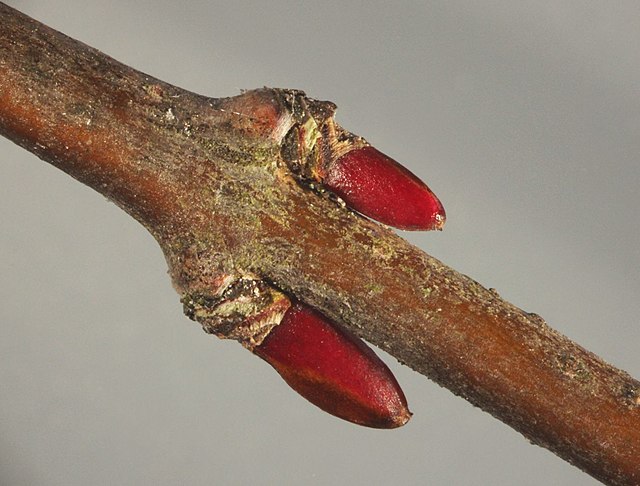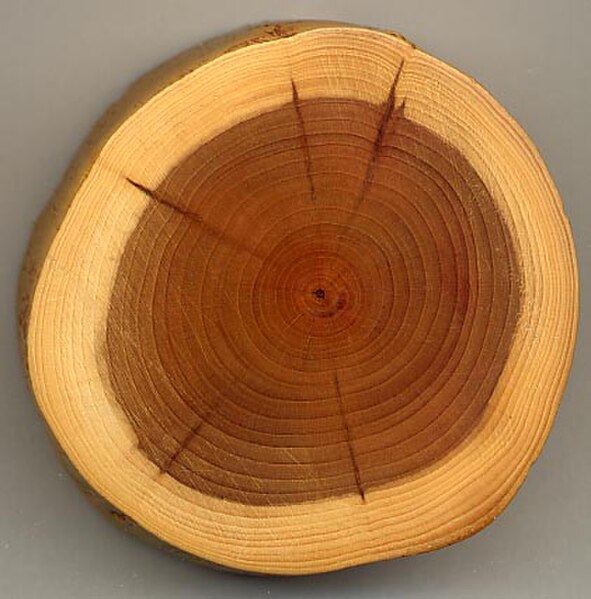A woody plant is a plant that produces wood as its structural tissue and thus has a hard stem. In cold climates, woody plants further survive winter or dry season above ground, as opposed to herbaceous plants that die back to the ground until spring.
A section of rosemary stem, an example of a woody plant, showing a typical wood structure.
Winter buds on Cercidiphyllum japonicum
Wood is a structural tissue found in the stems and roots of trees and other woody plants. It is an organic material – a natural composite of cellulose fibers that are strong in tension and embedded in a matrix of lignin that resists compression. Wood is sometimes defined as only the secondary xylem in the stems of trees, or more broadly to include the same type of tissue elsewhere, such as in the roots of trees or shrubs. In a living tree it performs a support function, enabling woody plants to grow large or to stand up by themselves. It also conveys water and nutrients between the leaves, other growing tissues, and the roots. Wood may also refer to other plant materials with comparable properties, and to material engineered from wood, woodchips, or fiber.
A knot on a tree trunk
Wood knot in vertical section
A section of a yew branch showing 27 annual growth rings, pale sapwood, dark heartwood, and pith (center dark spot). The dark radial lines are small knots.
Cross-section of an oak log showing growth rings






